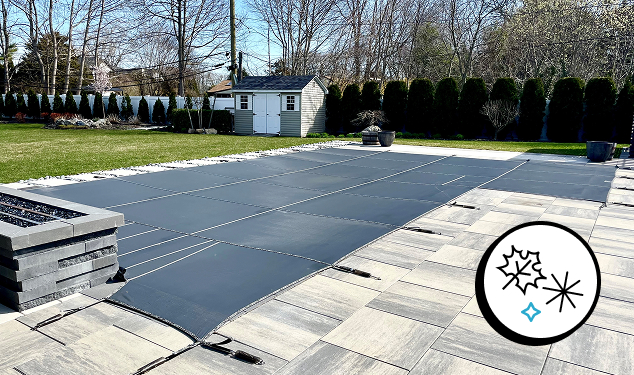As temperatures drop and the swimming season ends, it’s essential to protect your pool from winter damage. Closing your pool properly not only saves you time and money on repairs but also ensures it’s ready to enjoy again when the weather warms up. With Canada’s often harsh winters, knowing how to winterize a swimming pool is especially important to avoid issues like frozen pipes or damaged equipment. Follow these steps to learn how to close your pool safely and effectively for winter.
1. Balance Pool Chemicals
The first step in how to winterize a swimming pool is to balance the water chemistry. Ensuring that your pool’s pH, alkalinity, and calcium hardness are at the recommended levels will help prevent algae growth and protect pool surfaces from corrosion. Start by adding a shock treatment to kill any bacteria and contaminants, followed by a winterizing algaecide to keep the water clean throughout the off-season. This is a crucial step whether you’re learning how to close your pool for winter or simply preparing it for a short break.
2. Clean and Remove Debris
The next crucial step is to make sure your pool is thoroughly cleaned. Skim the surface to remove any leaves or debris and brush the walls and floor of the pool to loosen dirt. This will prevent organic matter from decaying in the water over the winter. Additionally, vacuum the pool to ensure it’s as clean as possible. Proper cleaning not only helps keep the pool water clear, but it also reduces the likelihood of stains or damage when you reopen it next season.
3. Lower the Water Level
Lowering the water level is a key step in knowing how to close your pool for the winter. For any pool, the water should be drained to just below the skimmer level. This helps protect the pool’s plumbing from freezing and expanding during cold weather. If you’re wondering specifically how to close your above-ground pool for winter, be cautious not to drain too much water, as this could cause the liner to shrink or become damaged.
4. Winterize Pool Equipment and Plumbing
One of the most critical parts of how to winterize a pool is ensuring that all equipment and plumbing are prepared for freezing temperatures. Start by draining the pump, filter, heater, and any other pool equipment. For inground pools, blow out the lines to remove any water that could freeze and cause damage. If you have an above-ground pool, be sure to disconnect hoses and remove equipment to store it safely indoors. Learning how to winterize an above-ground pool involves extra care with the liner and frame, as they are more vulnerable to cold weather damage.
5. Securely Cover the Pool
The final step in learning how to close your pool for the winter is to cover it securely. A high-quality pool cover is essential to protect your pool from debris, snow, and ice. Make sure the cover fits tightly to prevent wind from getting underneath and potentially damaging it. In areas with heavy snowfall, it’s a good idea to invest in a durable winter cover that’s designed to withstand the elements. This simple but effective step is how you winterize a swimming pool to ensure that it stays clean and safe until spring.
Knowing how to winterize a pool is crucial for Canadian homeowners looking to protect their investment. By following these steps—balancing chemicals, cleaning debris, lowering water levels, winterizing equipment, and covering the pool—you can ensure a smooth reopening next year. Whether you have an inground or above-ground pool, taking the time to close it properly now will save you headaches when the warm weather returns.





